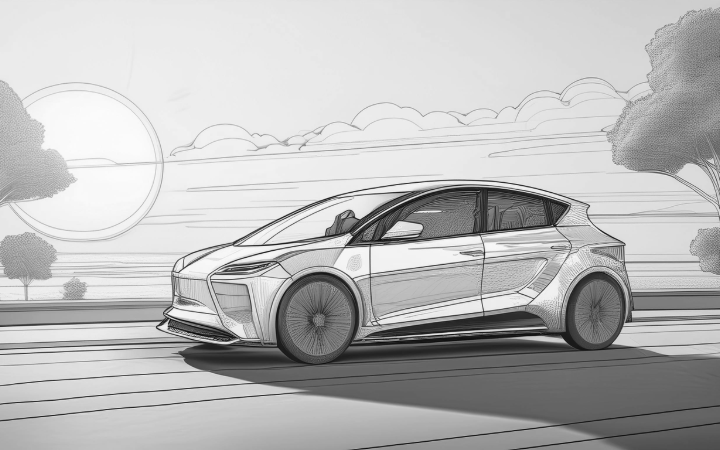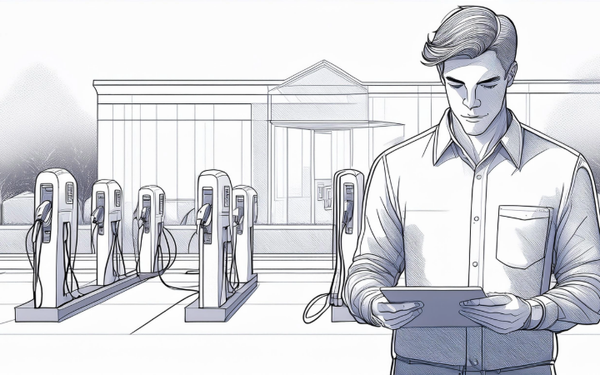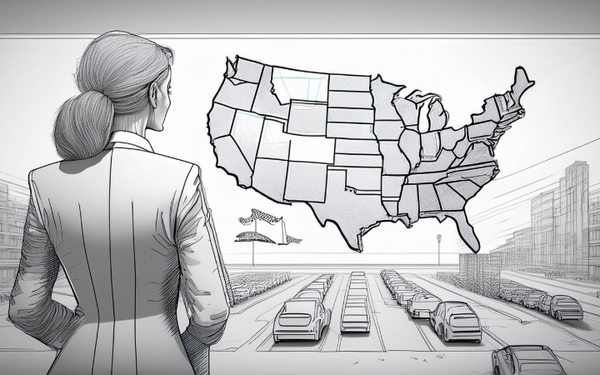The Evolution of Electric Vehicle Battery Life and Range: A Decade of Innovation and the Future of EVs
Over the past decade battery advancements have significantly improved EV range, cost, and sustainability. With innovations in lithium-ion and the upcoming shift to solid-state batteries, EVs are poised for even greater progress, driving the transition to cleaner, greener transportation.

Introduction
The electric vehicle (EV) industry has undergone a remarkable transformation over the past decade, driven largely by advancements in battery technology. What was once considered a niche market with limited appeal is now at the forefront of the global push toward sustainable transportation. Central to this shift is the rapid improvement in EV battery life and vehicle range, making electric cars more practical and appealing to a broader audience. This article explores the history of innovation in EV batteries, the current state of the technology, and predicts what the future holds as governments worldwide legislate the switch to electric vehicles.
A Decade of Innovation in EV Battery Technology
1. Early Challenges and Breakthroughs
In the early 2010s, the EV market was in its infancy. The first generation of mass-market electric vehicles, such as the Nissan Leaf and the Tesla Roadster, faced significant limitations in battery life and range. Most EVs offered a range of only 100 to 150 miles on a single charge, making them suitable primarily for short commutes or urban driving. Battery technology at the time relied heavily on lithium-ion cells, which were expensive to produce and had relatively low energy density.
However, the seeds of innovation were already being sown. Tesla’s introduction of the Model S in 2012 marked a turning point, showcasing a range of over 200 miles—an unprecedented achievement at the time. This milestone was achieved through advancements in battery chemistry, better thermal management systems, and an increase in battery pack size.
2. The Role of Lithium-Ion Batteries
Throughout the decade, lithium-ion batteries remained the cornerstone of EV development. Continuous improvements in battery chemistry, including the use of nickel-cobalt-aluminum (NCA) and nickel-manganese-cobalt (NMC) cathodes, increased energy density and reduced costs. As a result, EVs began to offer longer ranges at more affordable prices. By 2020, the average range of new EVs had increased to over 250 miles, with some models, like the Tesla Model S Long Range, surpassing 400 miles on a single charge.
In parallel, battery manufacturers invested heavily in scaling up production, leading to significant cost reductions. The cost of lithium-ion batteries fell by nearly 90% between 2010 and 2020, from over $1,000 per kilowatt-hour (kWh) to around $137 per kWh. This dramatic decrease made EVs more competitive with internal combustion engine (ICE) vehicles, spurring wider adoption.
3. Advancements in Battery Management and Charging
In addition to chemistry improvements, advancements in battery management systems (BMS) played a critical role in extending battery life and improving range. BMS technology helped optimize the performance of individual cells within a battery pack, ensuring even charging and discharging, which extended battery lifespan and enhanced overall efficiency.
Fast-charging technology also saw significant progress during this period. The introduction of 150 kW and 350 kW chargers enabled EVs to recharge more quickly, reducing the time needed to regain significant range and making long-distance travel more feasible.
The Current State of EV Battery Technology
As of 2024, the state of EV battery technology is more advanced than ever. Today’s electric vehicles offer ranges that rival or even exceed those of traditional gasoline-powered cars. For instance, the Lucid Air, a luxury EV, boasts a range of over 500 miles, setting a new benchmark for the industry.
Battery technology has continued to evolve, with new materials and manufacturing techniques leading to further gains in energy density and cost efficiency. Solid-state batteries, which promise to offer even greater energy density and faster charging times, are on the horizon. Companies like Toyota and QuantumScape are actively developing solid-state battery prototypes, with commercial deployment expected within the next few years.
In addition to range improvements, EV batteries are becoming more durable. Advances in battery chemistry and cooling systems have significantly reduced the rate of degradation, meaning that today’s EVs can maintain a high percentage of their original battery capacity even after several years of use.
Predicting the Future: What Will EVs Be Capable of in the Next Decade?
With governments around the world setting ambitious targets for phasing out internal combustion engines, the future of EV technology is poised for rapid advancement. Here’s what we can expect from electric vehicles in the coming decade:
1. Ultra-High Energy Density Batteries
The transition from lithium-ion to solid-state batteries will likely be a game-changer. Solid-state batteries use a solid electrolyte instead of the liquid or gel electrolytes found in current lithium-ion batteries, allowing for higher energy density and improved safety. This could lead to EVs with ranges of 600 miles or more on a single charge, making range anxiety a thing of the past.
Moreover, the use of alternative materials such as silicon anodes or lithium-sulfur chemistries could further boost energy density, allowing for smaller, lighter battery packs that still deliver exceptional range.
2. Faster Charging Times
Future EVs will be capable of ultra-fast charging, with charging times reduced to mere minutes. The widespread deployment of 800V and 1,000V charging systems, coupled with advancements in battery cooling technologies, will enable drivers to regain hundreds of miles of range in less than 10 minutes. This would make EVs even more convenient than gasoline cars, especially for long-distance travel.
3. Extended Battery Life and Second-Life Applications
As battery technology improves, the lifespan of EV batteries will continue to increase. Future batteries could last for over a million miles, further reducing the total cost of ownership for EVs. Additionally, as more EVs enter the market, the use of second-life batteries in stationary energy storage applications will become more common, contributing to a circular economy and reducing the environmental impact of battery production.
4. Integration with Renewable Energy
As renewable energy sources like solar and wind become more prevalent, EVs will increasingly be integrated into the broader energy ecosystem. Vehicle-to-grid (V2G) technology will allow EVs to act as mobile energy storage units, providing electricity to homes or the grid during peak demand periods. This will not only help stabilize the grid but also provide EV owners with additional revenue streams.
5. Legislation and the Mandate for Change
Governments around the world are enacting legislation to accelerate the shift to electric vehicles. In the U.S., the Biden administration has set a target for EVs to make up 50% of all new car sales by 2030. Similarly, the European Union plans to ban the sale of new gasoline and diesel cars by 2035. These mandates will drive further innovation in EV technology, as automakers race to meet regulatory requirements while satisfying consumer demand.
As these policies take effect, we can expect to see significant advancements in battery recycling and supply chain sustainability, reducing the environmental impact of EV production and ensuring a steady supply of critical materials like lithium, cobalt, and nickel.
Conclusion
The past decade has seen extraordinary progress in electric vehicle battery technology, transforming EVs from niche products into mainstream transportation options. With ongoing advancements in energy density, charging speed, and battery lifespan, the next generation of EVs will offer even greater range, convenience, and sustainability. As governments worldwide legislate the switch to electric vehicles, these innovations will play a crucial role in shaping the future of transportation, leading to cleaner, greener roads and a more sustainable planet.





